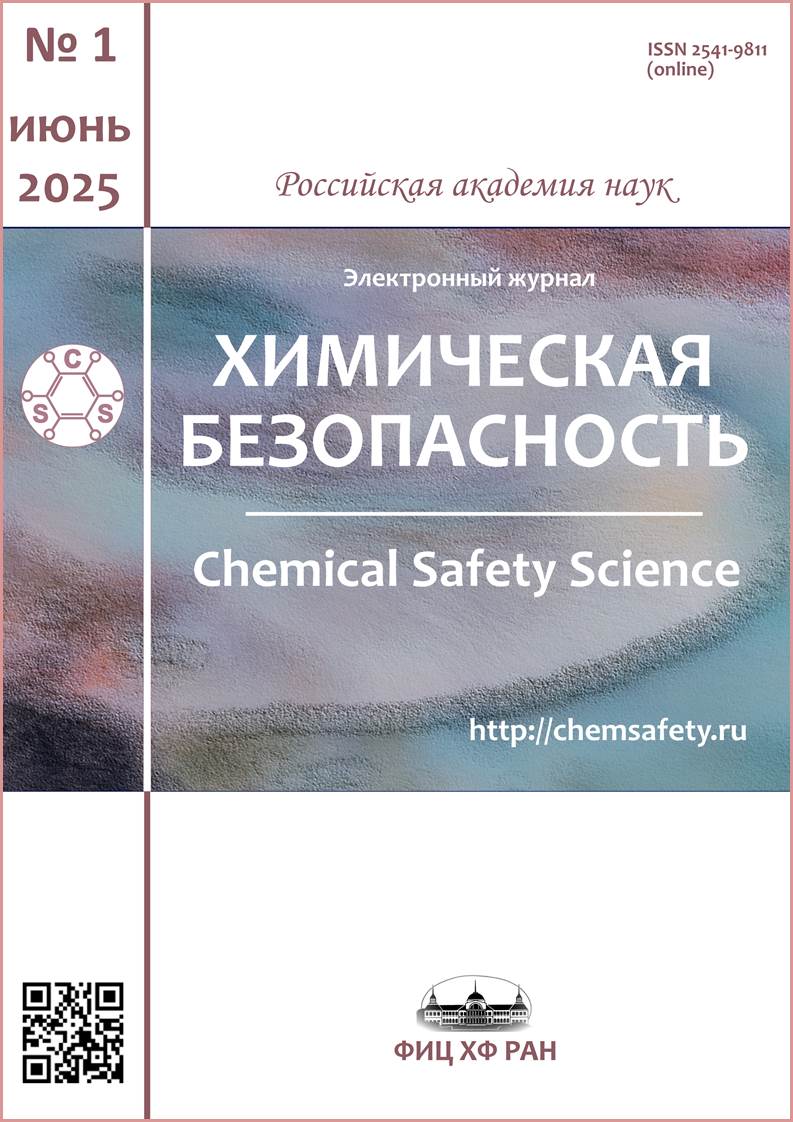Зависимость оценок аэрозольного загрязнения мегаполиса на базе напряженности атмосферного электрического поля от невозмущенного профиля проводимости
Аннотация
Аннотация – Взвешенные ультрадисперсные частицы представляют собой большую опасность для здоровья людей, поэтому крайне важно развитие опосредованных методов оценки концентрации аэрозольных частиц размерами до 0,1 мкм. Связь аэрозольных частиц с напряженностью электрического поля атмосферы позволяет использовать его для таких оценок. Значительная сложность проведения измерений высотных зависимостей параметров атмосферы в пунктах наблюдений, в особенности, для функции проводимости, требует проведения исследования по зависимости получаемых результатов от взятого конкретного модельного профиля проводимости. В данном исследовании проанализирована связь параметров модели оценки концентрации аэрозолей в воздухе на базе значений напряженности электрического поля для трех профилей проводимости атмосферы: а) профиля, состоящего из единой экспоненты, б) из трех экспонент и в) для профиля, хорошо отражающего характеристики, влияющие на электрическое поле атмосферы приземного слоя. Показано, что использование близких профилей, отражающих высотную неоднородность профиля проводимости, дает почти одинаковый результат, однако, сильно отличающийся от них профиль значительно изменяет получаемые оценки ‒ концентрация частиц в мегаполисе отличается почти на порядок от наблюдаемых значений.
Литература
Schraufnagel, D.E. (2020). The health effects of ultrafine particles. Exp. Mol. Med., 52, 311–317. https://doi.org/10.1038/s12276-020-0403-3.
Atmosphere. Handbook. Edited by Yu. S. Sedunov. (1991). L.: Hydrometeoizdat, P. 508 (in Russ.).
Morawska, L., Ristovski, Z., Jayaratne, R., Keogh, D.U. & Ling, X. (2008). Ambient nano and ultrafine particles from motor vehicle emissions: characteristics, ambient processing and implications on human exposure. Atmos. Environ. 42, 8113–8138. https://doi.org/10.1016/j.atmosenv.2008.07.050.
Plaude, N.O, Stulov, Ye.A., Parshutkina, I.P., Sosnikova, Ye.V. & Mohahova, N.A. (2013). Characteristics of atmospheric aerosol in the Moscow region. M.: Nauchn. mir, P. 80 (in Russ.).
Rybnov, S.Yu., Krasheninnikov, A.V., Soloviev, S.P. & Rybnov, Yu.S. (2024). Monitoring of the thermodynamic regime of atmospheric turbulence. Dynamic Processes in Geospheres, 16(1), 43–51 (in Russ.). http://doi.org/10.26006/29490995_2024_16_1_43.
Rybnov, Yu.S., Krasheninnikov, A.V., Soloviev, S.P. & Rybnov, S.Yu. (2023). Variations of geophysical fields during the eruption of the Hunga-Tonga-Hunga-Haapai volcano on January 15, 2022. Dynamic Processes in Geospheres, 15(1), 63–72 (in Russ.). http://doi.org/10.26006/29490995_2023_15_1_63.
Spivak, A.A., Gavrilov, B.G., Ryabova, S.A. & Tikhonova, A.V. (2024). On the possibility of formulating prognostic signs of dangerous atmospheric phenomena based on the analysis of variations of geophysical fields. Dynamic Processes in Geospheres, 16(4), 54–63 (in Russ.). https://doi.org/10.26006/29490995_2024_16_4_54.
Shvarts, Ja.M. & Oguraeva, L.V. (1987). Analysis of multiyear variations of atmospheric electricity values in the surface layer. Meteorology and hydrology, 7, 59–67 (in Russ.).
Jayaratne, E.R. & Verma, T.S. (2004). Environmental aerosols and their effect on the Earth’s local fair-weather electric field. Meteorol. and Atmosph. Physics, 86, 275–280. https://doi.org/10.1007/s00703-003-0028-9.
Sheftel, V.M., Chernyshev, A.K. & Chernysheva, S.P. (1994). Air conductivity and atmospheric electric fi eld as an indicator of antropogenic atmospheric pollution. J. Geophys. Res., 99, D5, 10793–10795. https://doi.org/10.1029/94JD00287.
Pustovalov, K.N., Nagorskij, P.M., Oglezneva, M.V. & Smirnov, S.V. (2024). The influence of wind direction on the ground electric field in Tomsk. Proceedings of the XXX Jubilee International Symposium “Atmospheric and Ocean Optics.Atmospheric Physics”, D125‒D129 (in Russ.).
Silva, H.G., Matthews, J.C., Conceição, R., Wright, M.D., Pereira, S.N., Reis, A.H. & Shallcross, D.E. (2015). Modulation of urban atmospheric electric field measurements with the wind direction in Lisbon. J. Physics. Conference Ser., 646(1), 012013. https://doi.org/10.1088/1742-6596/646/1/012013.
Krasheninnikov, A.V., Loktev, D.N. & Soloviev, S.P. (2018). Atmospheric electric field in megacity aerosol pollution conditions. Proceedings of SPIE - The International Society for Optical Engineering, 1083370. https://doi.org/10.1117/12.2502313.
Krasheninnikov, A.V., Loktev, D.N. & Soloviev, S.P. (2020). Megacity aerosol pollution and atmospheric electric field disturbances. Izvestiya, atmospheric and oceanic physics, 56(8), 759–772. https://doi.org/10.1134/S0001433820080046.
Krasheninnikov, A.V., Loktev, D.N. & Soloviev, S.P. (2024). Assessment of aerosol pollution in the city of Moscow based on measurements of the atmospheric electric field. Izvestiya atmospheric and oceanic physics, 60(8), 877–883. https://doi.org/10.1134/S0001433824701287.
Harrison, R.G. & Carslaw, K.S. (2003). Ion-aerosol-cloud processes in the lower atmosphere. Rev. Geophys., 41(3), 1012–1037. https://doi.org/10.1029/2002RG000114.
Morozov, V.N. (2011). Mathematical modeling of atmospheric-electrical processes taking into account the influence of aerosol particles and radioactive substances. SPb.: RGGM. P. 253 (in Russ.).
Morozov, V.N., Zajnetdinov, B.G., Zanukov, V.V. (2022). Influence of aerosol particles on the global electric circuit. System synthesis and applied synergetics. Collection of scientific papers of the XI All-Russian Scientific Conference, 304–309 (in Russ.). https://doi.org/10.18522/syssyn-2022-58.
Surkov, V. V. (2015). Pre-seismic variations of atmospheric radon activity as a possible reason for abnormal atmospheric effects. Annals of Geophysics, 58(5), A0554. https://doi.org/10.4401/ag-6808.
Kupovich, G.V., Morozov, V.N. & Shvarts Ja.M. (1998). Theory of the electrode effect in the atmosphere. Taganrog: TRTU. P. 124 (in Russ.).
Copyright (c) 2025 А.В. Крашенинников, Д.Н. Локтев, С.П. Соловьев

Это произведение доступно по лицензии Creative Commons «Attribution-NonCommercial» («Атрибуция — Некоммерческое использование») 4.0 Всемирная.












